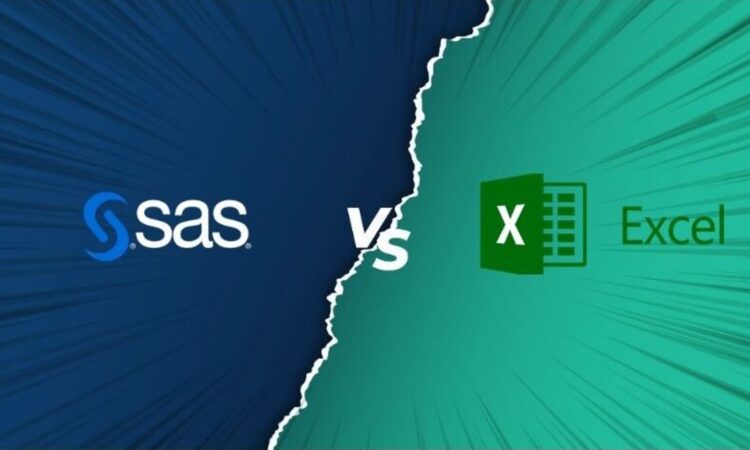Everything in this new technology is evolving at a fast pace. Every day, scientists make new discoveries. The SAS vs Excel controversy is one of the most prevalent issues that every statistician has to deal with. Excel is one of the programs used for data representation. In contrast, one of the statistics programs used to present data is SAS. Soon, statisticians will be familiar with all the latest software and technological advancements that Excel Assignment Help occur daily. Most importantly, these innovations simplify labor.
This blog will discuss the basic differences between Excel vs. SAS. But before clarifying the debate of SAS vs Excel, we will give some overview of both terms. This overview will help you understand the basics of both, and it will include their definitions and their uses.
What Is SAS?
SAS refers to Statistical Analysis Software. It was developed by the SAS Institute in 1960. It has been used for data management, predictive analysis, and corporate intelligence. And also prescriptive analysis and descriptive analysis, and other tasks. Many statistical techniques and components have been added to the program since then. SAS takes advantage of Macintosh’s GUI with JMP (Jump) launch for statistics. Jump is mainly utilized in Six Sigma, quality control, design, scientific-analytical applications, and engineering.
SAS is platform-agnostic, meaning it can operate on any operating system, including Windows and Linux. SAS is driven by SAS programmers who use a series of ideas on SAS datasets. It uses to generate appropriate data analysis reports. SAS has expanded its product line with several solutions throughout the years. It has data quality, data governance, text mining, big data analytics, health science solutions, and fraud management, among other things. SAS is likely to have a solution for any business area.
Uses Of SAS
SAS is mainly run on massive datasets. With the support of SAS software, you can achieve different operations on the data like
- Statistical analysis.
- Application development.
- Data management.
- Business planning.
- Report structure with excellent graphics.
- Project management.
- Operations research.
- Data transformation.
- Quality improvement.
- Data extraction.
- Data updation and alteration.
What Is Excel?
Microsoft Excel is a spreadsheet application that is part of Microsoft’s Office suite. It is productivity software developed and sold by Microsoft’s Office company. Excel organizes data in rows and columns like a word processor like Microsoft Word. The joining of rows and columns is known as a cell. You can include text, a numeric value, or any formulas in any cell.
Excel can easily use for calculating and organising information or data. It can interpret data, compute statistics, and create pivot tables. And it can display data in charts and graphs. You may, for example, design an Excel spreadsheet that generates a monthly budget, tracks relevant expenditures, and arranges the data interactively by criterion.
Uses Of Excel
Excel is utilized to arrange data and conduct financial analysis. It is applied to overall business functions and at businesses from small to large. Here are some of the foremost uses:
- Data management.
- Data entry.
- Financial analysis.
- Time management.
- Accounting.
- Financial modeling.
- Charting and graphing.
- Customer relationship management (CRM).
- Programming.
- Task management.
Excel is used in almost anything that requires arrangement or organization.
Significant Difference Table Between SAS vs. Excel
Below, we have given some of the different points of both SAS and Excel. It will help you know the difference between the terms.
| Parameters | Excel | SAS |
|---|---|---|
| Total Number Of Columns | 16,383 | 32,767 |
| Total Number Of Rows | Approx 1.048 million | Approx. 2.15 billion |
| Price | Price is cheap | Price is expensive |
| Typical User | Commonly used by a non-programmer | Mostly used by a programmer |
| Data Manipulation | It has average data manipulation | Powerful |
| Documentation | OK | Good |
| Popularity | Most extensively used tool | Extensively used in data mining |
| General Use | Easy to understand and use | Hard to understand and use |
| License | Perpetual | Year on year |
| Statistical Analysis | Very limited | Advanced analysis |
| Macro Programming | Powerful | Very powerful |
Wrap Up!
To sum up, the significant difference between both Excel vs SAS is that the software used for data representation is EXCEL. On the other hand, SAS is a part of statistics used to present data. SAS is the best option when you need something for data management. Also, for predictive analysis, corporate intelligence, prescriptive analysis, and descriptive analysis. Excel is best if you need something for data management, data entry, and financial analysis. And also for time management, accounting, or financial modeling.






